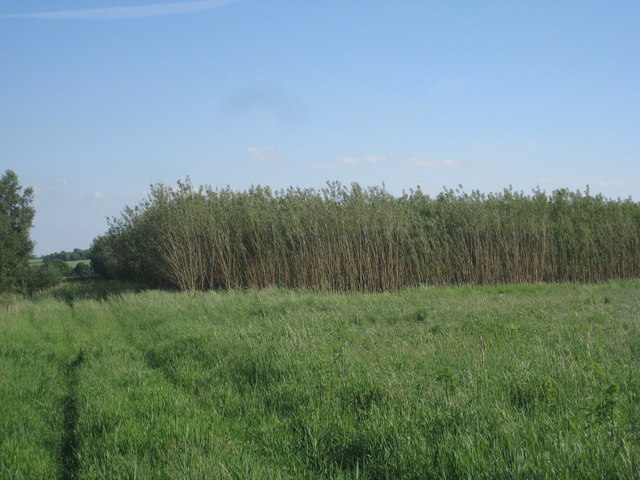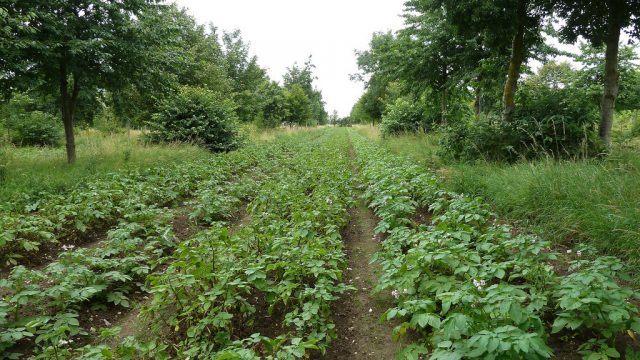In the second of his short series, Richard Edwards explores ways that farms in Wales can balance benefits for the environment, communities and local economies.
This is the second part of a short series of articles by Richard Edwards. The first can be read here.
My home is currently surrounded by empty fields of grass awaiting the arrival of my neighbour’s cattle and sheep to graze the fresh spring growth. During the winter months the animals have been housed in barns nourished by imported feedstuffs and the poor silage harvest from 2018. Productivity from this land is low, subsidised, and any obvious benefits are hard to determine.
When the grass eventually begins to grow, the meat and dairy products that will be produced in these fields cannot be purchased in my village or the local towns. I must be satisfied that I can buy eggs and runner-bean plants from the farm gate: we can all look forward to bean omelettes in August!
Farmers are well-practised in providing what some refer to as “our staples” – corn, wheat, milk, cheese, butter, meat, eggs, etc. and while the demand for these basic foodstuffs still exists dietary habits are changing rapidly.
Many of the largest global corporations, including Cargill, who supply feedstocks to our farmers, are investing heavily in lab grown meat. The irony here should not to be missed! According to Bill Gates “raising meat takes a great deal of land and water and has a substantial environmental impact.” Combine the wealth of Cargill and Gates and you have the financial muscle to impact a huge change on the agricultural landscape of Wales. These are very, very large red-flags being waved at all of us!

As suggested in my previous article, if we are to ensure that agriculture in Wales can benefit future generations, then we need to develop a landscape where food is being grown alongside energy crops in a management system that sequesters greater volumes of CO2.
At the same time, we need to reduce the current levels of agricultural CO2 emissions by adopting smarter systems of food production and eliminate the supply-chains that sustain the export of food. These landscapes must offer both ecology and society greater benefits, but the overriding priority must increase farming incomes and guarantee intergenerational succession.
Community economy
I live in a community with 45 houses and 15 farms. My family buys electricity from a large energy corporation and our food from the local supermarket and small stores in the local villages. We would prefer to buy our electricity and most of our food from our neighbours. I suspect that many other people living in Wales would share that ambition.
A report by Bangor University, suggests that each animal is responsible for the on-farm consumption of between 36Wh – 434kWh of electricity per annum. If we set the average at 200 animals per farm (low-end estimation) then the annual use of electricity per farm stands between 7,200kWh to 86,800kWh, depending on livestock. The annual cost of electricity per farm, based on the rates used below for average domestic use, would stand between £1,300 – £15,000.
The average home in Wales uses about 3223kWh of electricity annually. Each of the 45 houses in my community will be paying, on average, £1170 for their annual consumption of electricity, gas and other fuels. The average annual food cost for a typical UK household was around £4,753 in 2018 (based on the average 2.4 people per household), including £255 spent on non-alcoholic drinks.
The economic reality here is that food and energy could be costing our community more than £500,000 a year. It would be more beneficial if we could retain that money in the community. To achieve that we need our farmers to grow all our energy and possibly 70% of our collective weekly shopping basket. This is not as challenging as it may sound.
Foundation of economy

One of the practical ways to combat climate change is to lock up or sequester carbon from the atmosphere through planting more trees – providing that the right trees are planted in the right place, for the right purpose and managed to maximise the benefits that they offer. Grass also stores carbon, but the benefits are lost when it used to produce meat and dairy products.
There is no one simple formulae that enables the calculation of levels of carbon/CO2 that trees can store. The Forestry Commission has published a leaflet which suggests that “when UK woodlands are looked at as a whole, the average is around 5.4 tonnes of carbon dioxide per hectare per year (or 1.4 tonnes of carbon per hectare per year), including broadleaved and unproductive woodlands.”
The most basic silvicultural (tree-based) system of carbon sequestration is based around short-rotation willow. A single hectare of willow coppice should provide between 7-12 tonnes of dried fuel annually. That fuel would carry a calorific value of about 14 Megajoules per kilogram, which equates to about 3900kWh of energy per tonne.
Because willow is cut down and allowed to grow back under short rotations (3-5yr cutting cycles) the amount of carbon dioxide sequestered is assumed to increase to around 8tonnes per hectare. The complexities of carbon accounting in areas of short-rotation willow coppice are described in this document.
Theoretically a single hectare of willow coppice could provide between 7-10 houses with all the electrical power that they require over a year. If we apply those figures to the requirement of our community, we would determine that the entire demand of 45 houses could be grown on between 4-7 hectares of land. The average farm holding in Wales is about 48 hectares.
To meet the entire electrical power demand of the community (45 homes and 15 farms) our farmers would need to convert, at most, 60 hectares of their land. This equates to 12% of all the farmland in our community!
Common-Wealth Economy

If that entire requirement for electrical power was to be provided from a single farm within our community then our demand will have done nothing more than mimic the monocultured, diseased landscape of conifers that surround us. If that requirement was met by all 15 farms in our community – at 4 hectares per farm – then our demand will enable the development of an extremely progressive system of agro-forestry, which would form the basis of a new community-based economy.
I don’t want to be able to buy lab-grown meat from my community! I understand that the local landscape requires animals to maintain parts of its ecology, therefore our progressive agro-forestry systems must accommodate that need.
I also understand that producing meat needs to become more sustainable and to that end I think that the number of sheep being farmed in Wales needs to fall from 10million to 500,000, which would feed the home-grown demand for lamb.
There are no hard and fast rules that dictate what can and cannot be grown within an agro-forestry system. Providing that we plan to the requirement of the community and pay attention to the wisdom of soil care and improvement then sequestering carbon via soil and trees planted through unploughed land will provide enormous benefits for us all.
We can be progressive in the types of crops that we grow: hemp can be grown for cloth and medicine, Sida hermaphrodita has enabled bees to produce 120kilograms of late yield honey per hectare, apples combined with oak coppice allow pigs the perfect autumn forage, wild turkeys will prosper within tall grasses, which goats can co-graze to produce milk. Our ambitions here can be almost limitless.
The effort to establish the UK’s finest example of a progressive agro-forestry system has been captured in this 25minute video, which details Professor Martin Wolfe’s farm in Suffolk (well worth the time). Feasting on the bread that Martin bakes from the heritage wheat that he grows on his farm is something that we should all be able to experience!
Within the next 12 months Martin will be generating his entire heat and power requirement to operate his business and power his house and all outbuildings. The feedstock to provide that heat and power will have been grown within 500metres of the farmhouse. It could be cut by hand, the local community could be invited to help with that task, the biomass could be carried to the farm and at the end of the day the entire community would know that they have all played a part in generating their own energy.
All articles published on Click on Wales are subject to IWA’s disclaimer.





